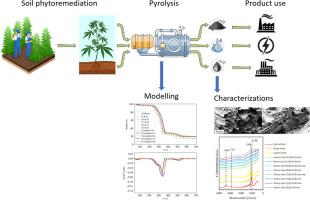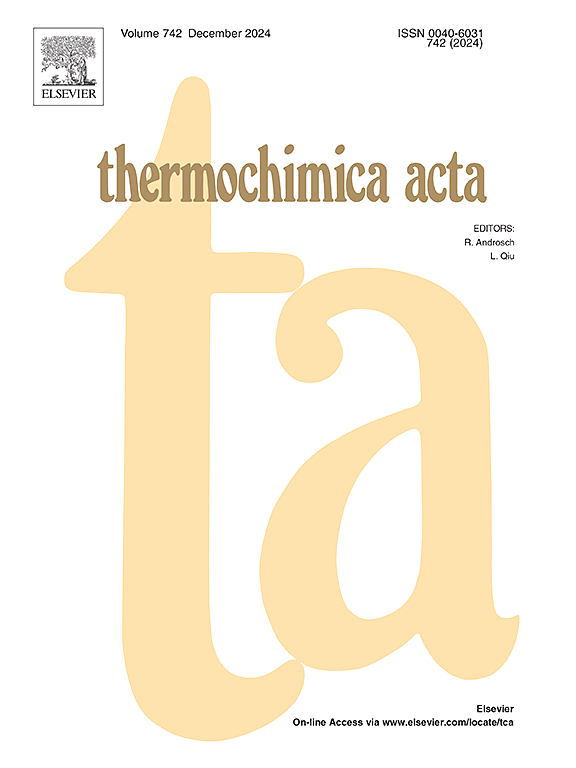受污染土壤植物修复中工业大麻生物质的热解:动力学、模拟迁移现象和基于生物炭的金属还原
IF 3.1
2区 化学
Q2 CHEMISTRY, ANALYTICAL
引用次数: 0
摘要
植物修复是利用植被对受污染的环境进行就地处理。植物用于土壤植物修复后,其生物质可用作增值产品或通过热化学过程进行转化。将热解技术大规模应用于植物修复生物质需要准确的预测动力学模型和对所产生材料的毒性进行鉴定。通过改变工艺条件,在实验室规模上对工业大麻(Cannabis sativa L.)的热解过程进行了研究,并通过考虑四个具有一阶反应的假成分进行了精确建模。确定系数的平均值为 0.9980。对生物质和生物炭进行了表征,并对气相中的主要成分进行了监测。我们在根部发现了镉、铅和锌,但含量低于土壤中的含量。尤其是叶子和茎,这些元素的含量微乎其微,因此,即使大麻生长在受污染的土壤上,也可以直接使用这些部分。热解后,固体部分的污染物浓度下降,这可能是由于金属氧化物(或盐类)还原成元素形式以及随后的蒸发所致。这种热解工艺具有处理富含重金属的生物质的潜力,通过冷凝进行气相净化,产生农业级生物炭、富含一氧化碳的气体和吸收材料中高度浓缩的重金属流。本文章由计算机程序翻译,如有差异,请以英文原文为准。

Pyrolysis of industrial hemp biomass from contaminated soil phytoremediation: Kinetics, modelling transport phenomena and biochar-based metal reduction
Phytoremediation is the use of vegetation for the in situ treatment of contaminated environments. After plants have been used for phytoremediation of soils, their biomass can be used for example as value-added products or converted by thermochemical processes. Large-scale application of pyrolysis technology for phytoremediation biomass requires accurate predictive kinetic models and a characterization of the toxicity of the materials produced. The pyrolysis of industrial hemp (Cannabis sativa L.) was investigated on a laboratory scale by varying the process conditions and accurately modelled by considering four pseudo-components with first reaction order. The average value of the coefficients of determination is 0.9980. Biomass and biochar were characterized and the main components of the gas phase were monitored. We found Cd, Pb, and Zn in the roots, although in lower amounts than in the soil. Especially the leaves and stems showed negligible traces of these elements, so that these parts can be used directly, even if the hemp was grown on the polluted soil. After pyrolysis, the concentration of pollutants in the solid fraction decreased, which could be attributed to the reduction of metal oxides (or salts) to elemental form and subsequent evaporation. This pyrolysis process has the potential to treat heavy metal-rich biomass, with gas phase purification via condensation, yielding agricultural-grade biochar, CO-rich gas and a highly concentrated heavy metal stream in absorbent material.
求助全文
通过发布文献求助,成功后即可免费获取论文全文。
去求助
来源期刊

Thermochimica Acta
化学-分析化学
CiteScore
6.50
自引率
8.60%
发文量
210
审稿时长
40 days
期刊介绍:
Thermochimica Acta publishes original research contributions covering all aspects of thermoanalytical and calorimetric methods and their application to experimental chemistry, physics, biology and engineering. The journal aims to span the whole range from fundamental research to practical application.
The journal focuses on the research that advances physical and analytical science of thermal phenomena. Therefore, the manuscripts are expected to provide important insights into the thermal phenomena studied or to propose significant improvements of analytical or computational techniques employed in thermal studies. Manuscripts that report the results of routine thermal measurements are not suitable for publication in Thermochimica Acta.
The journal particularly welcomes papers from newly emerging areas as well as from the traditional strength areas:
- New and improved instrumentation and methods
- Thermal properties and behavior of materials
- Kinetics of thermally stimulated processes
 求助内容:
求助内容: 应助结果提醒方式:
应助结果提醒方式:


